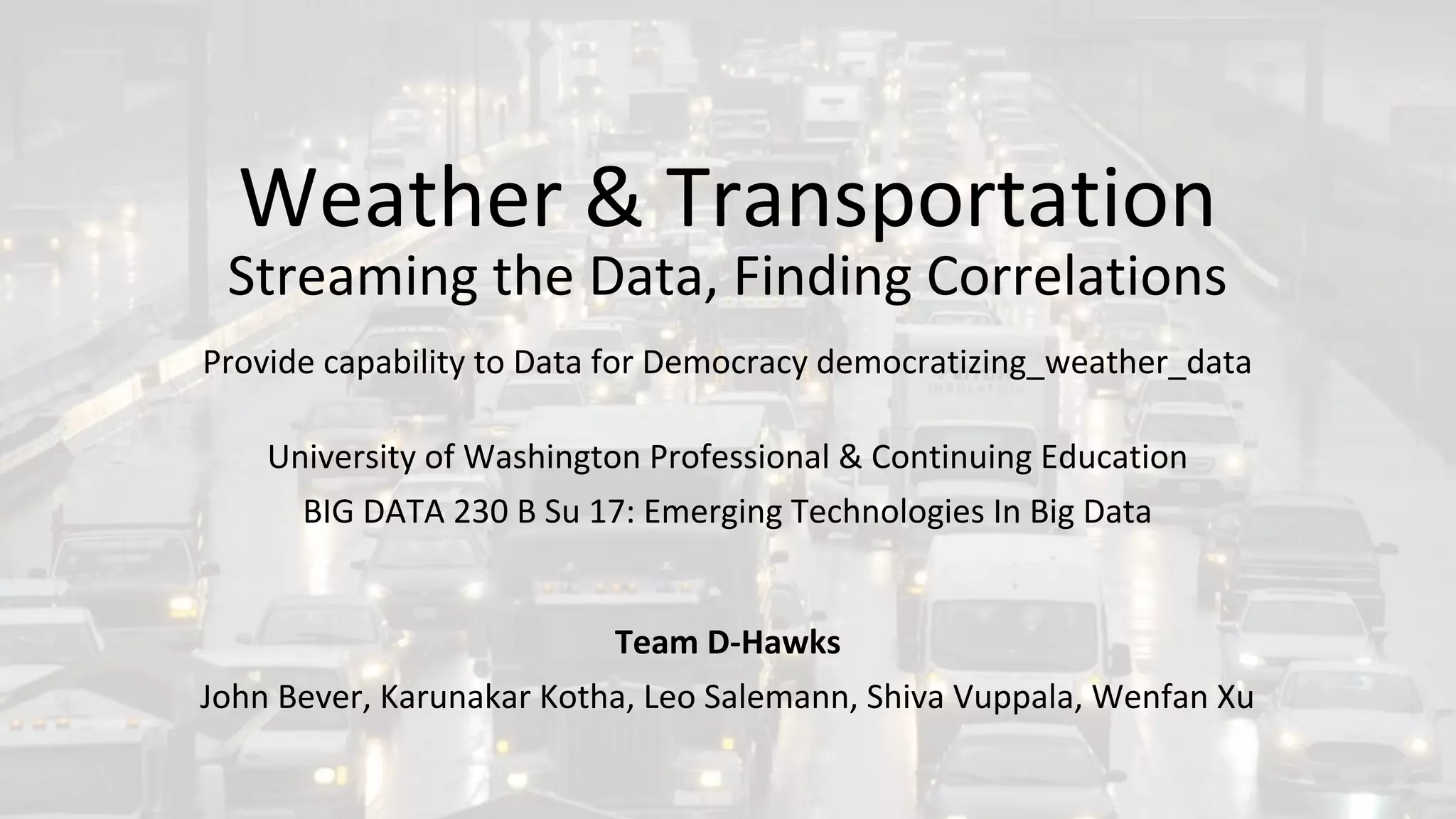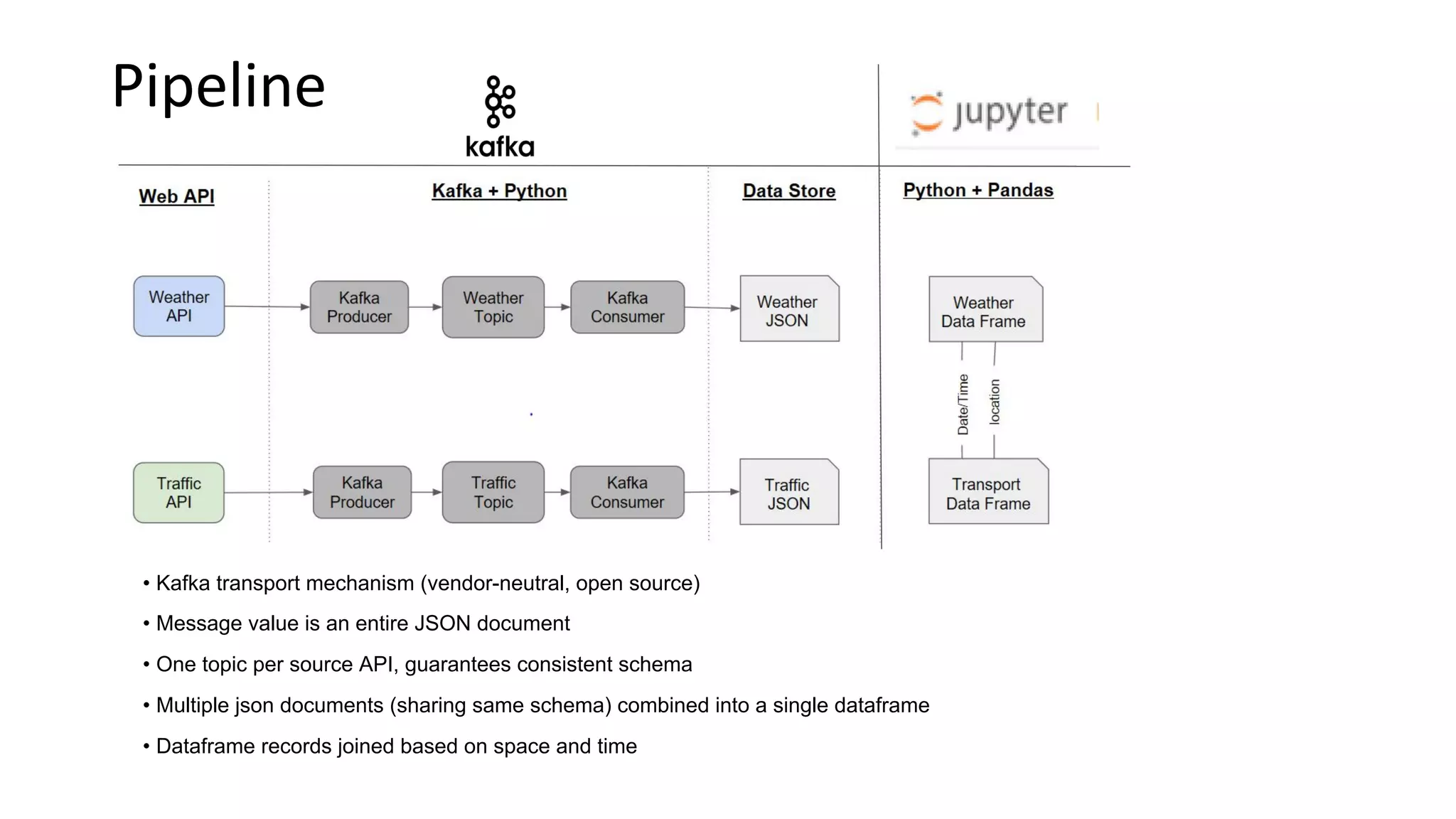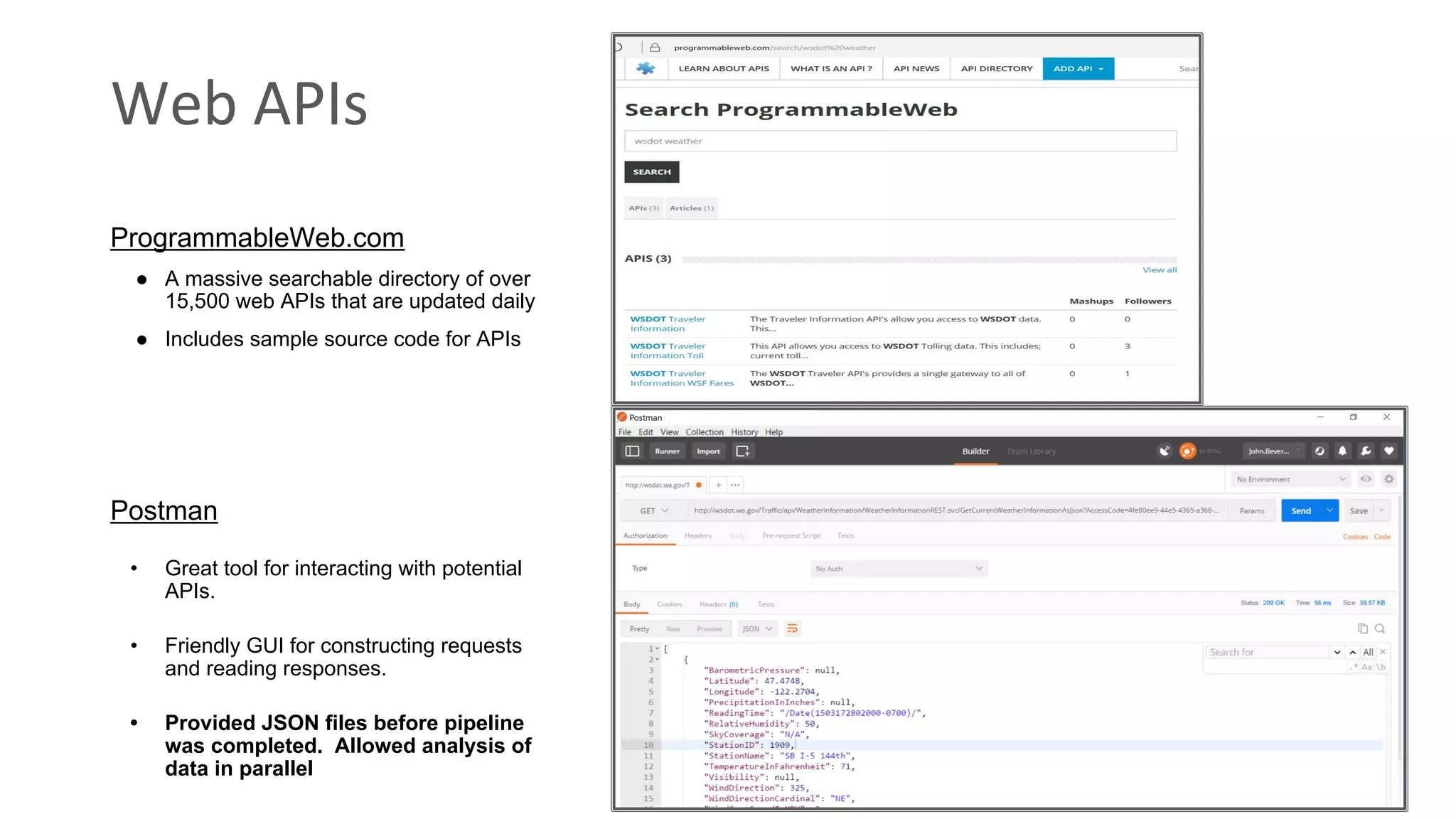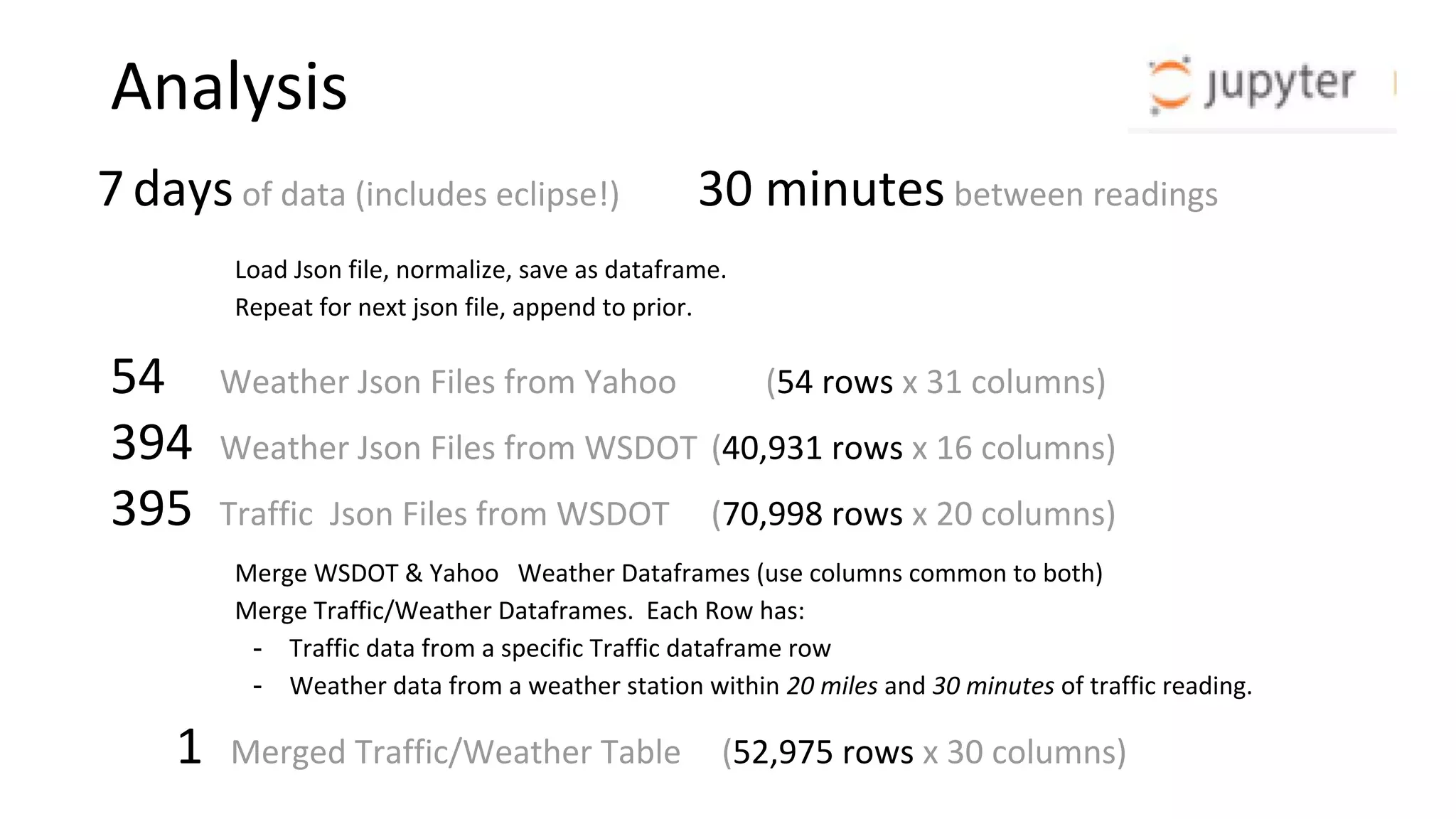The document outlines a project aiming to democratize weather and transportation data by creating a streaming capability to extract and analyze this data using open-source tools. It details the use of various technologies, including Kafka and web APIs, to merge and visualize data for machine learning applications. Key takeaways emphasize library selection, spatial plotting, and future enhancements, like extending data collection and refining parameters.









![Wrapping Up ... Key Takeaways • Choose your python libraries carefully (2 lines of code for a fully-labeled lineplot vs. dozens) • Spatial plots first, data-joins later (I-5 traffic data vs. statewide weather, also Portland) • The fastest way to count records in a dataframe is df.shape[0] Conclusion • Data for Democracy has a repeatable way to extract weather and transportation data from WSDOT and Yahoo • Jupyter Notebook provides a teaching/coding environment • Bitnami provides low-cost simple Kafka infrastructure Further Work • Upload csv and zipped json’s to data.world • Better parameters for Producer scripts (ex. Longitude, Latitude, Date, Time) • Config files for access keys • More matrix plots, Data Science, Machine Learning •Gather data for longer time frames (fewer readings per day?) •Isolate matrix plots to specific locations and/or time.](https://image.slidesharecdn.com/bigdatasu17outbrief-171006045609/75/Streaming-Weather-Data-from-Web-APIs-to-Jupyter-through-Kafka-10-2048.jpg)
